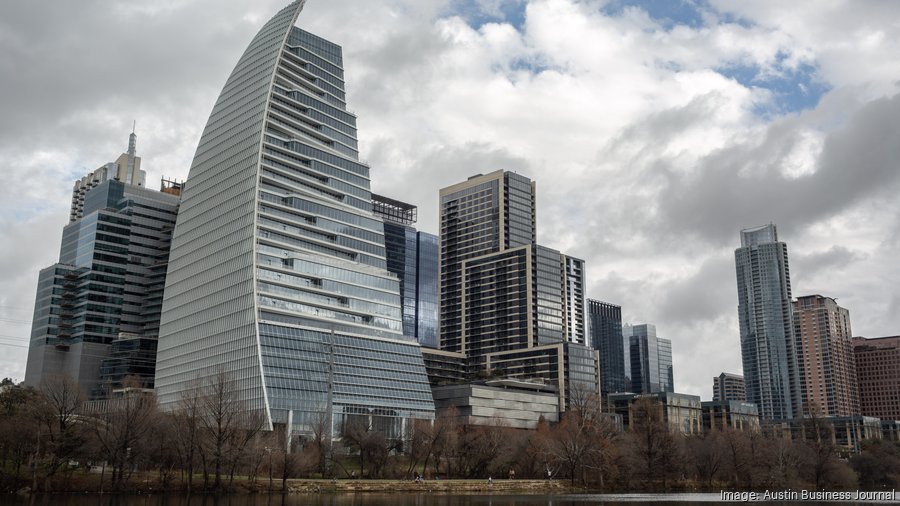
Austin Business Journal shares, "The Austin metro gained an average of about 159 people a day from 2023 to 2024. While that may sound like a lot, it's down slightly from a growth rate of 171 a day during the previous 12-month period.
According to new figures from the U.S. Census Bureau, the metro's population climbed by about 2.3% from July 2023 to July 2024, an addition of 58,019 people that brings its total to 2.55 million — the first time it has topped the 2.5 million mark. That factors in everything including people who move here, babies born here and deaths.
At 2.3% growth, that's a slight decline from the 2.6% clocked in the previous 12-month period, when the metro — which consists of Travis, Williamson, Bastrop, Hays and Caldwell counties — added 62,243 people.
Once again, the bulk of the additions were outside Travis County, which is by far the metro's most populous county with 1.36 million residents and boundaries that roughly mirror Austin's city limits. More than two out of every three people added to the metro during the recent 12-month period reside outside the central core, according to the data.
That has been the trend recently, and the new figures are more evidence that the suburbs continue to be the metro's growth driver. Excluding Travis County, the four other metro counties grew a combined 3.7% in the latest period — although that's still a dip from their combined growth rate of 4.3% during the previous period. By itself, Travis County grew by just 1.2% in the latest period, unchanged from a year-ago and on par with the national growth rate.
How many people move here a day?
Not counting new Central Texans born here, only the transplants, census statistics show that the Austin area netted 41,926 people between July 1, 2023, and July 1, 2024. That translates to 114 people a day on average moving to Central Texas — not far off from totals clocked over the past decade but slightly lower than many years.
The Census doesn't explain where these people moved from, but historically the vast majority of newcomers to the Austin area arrive from other parts of Texas.
Travis was the only one of the five counties to experience negative domestic migration, meaning more Americans moved out of it for other areas of the metro, state or nation than into it. The county lost 13,504 people due to negative domestic migration, according to the new figures, even as the metro overall gained 13,980 from domestic migration.
Lila Valencia, demographer for the city of Austin, has said previously that domestic migration into the city appeared to be slowing. She has cited housing affordability and availability as among the culprits.
According to the latest figures from the Austin Board of Realtors and Unlock MLS, the median price of a single-family home within the city came in at $564,000 in February, compared to $430,000 in the metro overall.
“A lot of that has to do with a little bit of the slowdown that we're seeing in our job growth as well in the region,” Valencia said earlier this year. “Some of it also has to do with a continuing pattern of families that have moved out of the area that really was exacerbated by the housing affordability pressures that were felt immediately after the pandemic.”
Still, international migration to Travis County outpaced the metro's other counties substantially, with Travis gaining 19,522 that way. Williamson County came in second, adding 6,663 people through international migration.
Caldwell County was the fastest-growing county in the metro in the latest figures, climbing 4.6%, or by 2,323 residents. At 52,430 people, however, it's also the metro's smallest county, with all others topping 100,000.
Williamson County gained the most new residents overall, adding 25,840 — for a 3.7% growth rate — and bringing its total to 727,480.
The slowdown in population growth isn’t a bad sign for the area because it would be difficult for any area to maintain the rate of population growth that Austin has seen in recent years, said Matt Patton, an economist with Austin-based Angelou Economics.
“Matching that percent increase becomes more difficult every single year,” Patton said. “That doesn't mean that Austin is losing ground by any means, it just means that we are at a different stage of growth than those other communities.”
Patton also said that Austin’s established technology and public service sectors provide stable footing for the region while the growing presence of manufacturing could be another avenue for growth in the region. He also said that Austin’s is also positioned to handle potential turbulent times in the future due to the region’s history of innovation and diversified economy.
“Austin will figure it out, whatever cards are dealt Austin will play them the best way possible,” Patton said."
Source: Austin Business Journal
Written by: Bob Sechler & Sean Hemmersmeier
Published: March 13, 2025
Posted by Grossman & Jones Group on
Leave A Comment